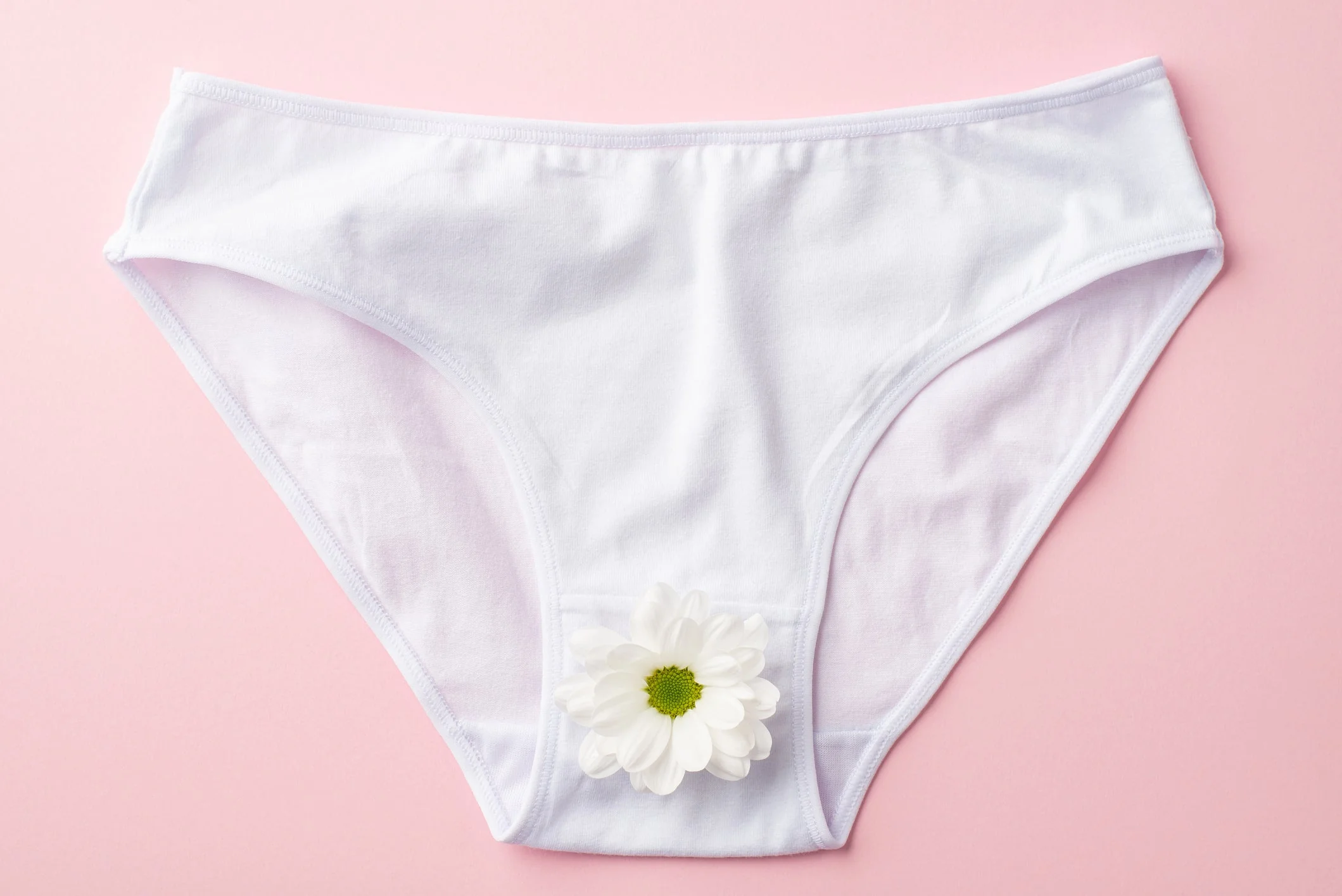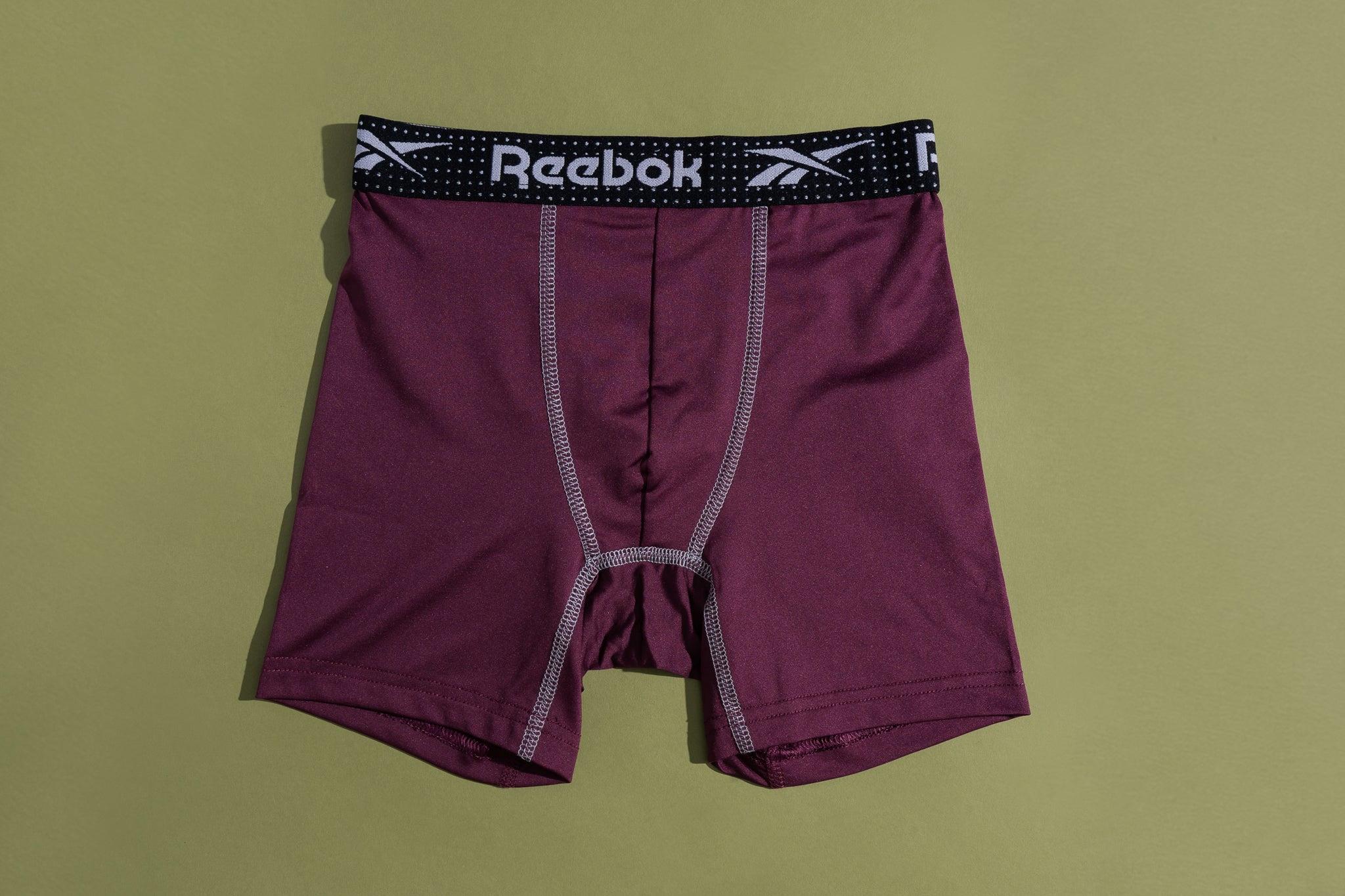

FAQs
Why Is My Underwear Irritating Me
Modified: August 2, 2023
Discover the reasons behind your underwear irritation and find answers to other general questions about this uncomfortable issue.
(Many of the links in this article redirect to a specific reviewed product. Your purchase of these products through affiliate links helps to generate commission for Under-tec.com, at no extra cost. Learn more)
Table of Contents
Introduction
Do you find yourself constantly irritated by your underwear? You’re not alone. Many people experience discomfort and irritation caused by their undergarments. Whether it’s itching, redness, or chafing, underwear irritation can be a real nuisance. But why does it happen? And more importantly, how can you prevent it?
In this article, we will delve into the world of underwear irritation and uncover the common causes behind it. From fabric sensitivity to hygiene issues, there are several factors that contribute to this problem. We will also explore remedies, treatment options, and practical tips to prevent underwear irritation and keep you comfortable all day long.
Understanding the underlying causes of underwear irritation is crucial in finding effective solutions. Fabric sensitivity and allergies, friction and chafing, and poorly fitting underwear are among the main culprits. Additionally, hygiene practices and the way you care for your underwear can also play a role in triggering irritation.
By gaining insight into these factors, you can make informed choices when it comes to selecting underwear that suits your needs and preferences. Moreover, adopting proper hygiene practices and implementing preventive measures can make a significant difference in reducing underwear irritation.
So, if you’re tired of dealing with uncomfortable and irritating underwear, keep reading. We will guide you through the various causes, treatment options, and preventive measures that will help you bid farewell to underwear irritation for good.
Understanding the Underwear Irritation
Before we dive into specific causes and remedies, let’s take a closer look at what underwear irritation actually means. Underwear irritation refers to any discomfort or irritation experienced on the skin in the area covered by underwear. This can manifest as itching, redness, rashes, or even a burning sensation.
It is essential to understand that underwear irritation is not something to be taken lightly. It can negatively impact your daily activities, cause significant discomfort, and even affect your overall well-being. Therefore, it’s crucial to identify the underlying causes and implement appropriate measures to alleviate this irritation.
One of the primary reasons for underwear irritation is the prolonged exposure of the skin to certain irritants or allergens. The fabric of the underwear, the fit, and the hygiene practices all play a significant role in determining whether irritation will occur.
Furthermore, certain lifestyle factors can exacerbate underwear irritation. For example, engaging in activities that involve a lot of movement or sweat can increase the friction and chafing experienced in the underwear area, leading to irritation.
In some cases, the irritation may be a result of an allergic reaction to particular fabrics or chemicals used in the manufacturing process. Some individuals have sensitive skin that reacts negatively to certain materials, dyes, or laundry detergents.
It is also worth noting that underwear irritation can affect individuals of all genders and ages. From men’s boxers to women’s panties, anyone can experience discomfort and irritation caused by their choice of underwear.
Overall, understanding the various factors contributing to underwear irritation is crucial in identifying the appropriate remedies and preventive measures. By delving deeper into the specific causes, we can develop a plan to combat underwear irritation head-on.
Common Causes of Underwear Irritation
Underwear irritation can be caused by various factors, ranging from fabric sensitivity to hygiene issues. Here are some of the most common culprits:
- Fabric Sensitivity and Allergies: One of the primary causes of underwear irritation is sensitivity or allergic reactions to the fabric. Some individuals may have an allergic response to synthetic materials, such as polyester or nylon, while others may be sensitive to natural fibers like wool or silk. These reactions can result in itching, redness, and irritation.
- Friction and Chafing: Friction between the skin and the underwear can lead to irritation and chafing. Activities that involve a lot of movement, such as running or exercising, can increase the likelihood of friction and subsequent irritation. Additionally, wearing tight or ill-fitting underwear can also contribute to friction and chafing.
- Poorly Fitting Underwear: Wearing underwear that is too tight or too loose can cause irritation. Tight underwear can create friction and restrict airflow, leading to discomfort and irritation. On the other hand, loose underwear can shift around, causing rubbing and friction against the skin. It is important to choose underwear that fits properly and provides adequate support.
- Hygiene Issues: Poor hygiene practices can contribute to underwear irritation. Not changing underwear regularly, not washing them properly, or using harsh detergents can irritate the skin and lead to discomfort. Bacteria and sweat build-up can also worsen irritation and increase the risk of infections.
Identifying the specific cause of your underwear irritation can help you choose appropriate remedies and preventive measures. If you suspect fabric sensitivity or allergies, opt for underwear made from hypoallergenic materials or try natural fabrics that are known for their breathability. For friction and chafing, consider wearing moisture-wicking underwear or using powders or creams to reduce friction.
It is also essential to pay attention to the fit of your underwear. Choose underwear styles that provide comfort and support without being too tight or restrictive. Additionally, practicing good hygiene, including regular changing and proper washing of underwear, can help prevent irritation caused by bacterial or sweat build-up.
By understanding these common causes of underwear irritation and implementing appropriate measures, you can alleviate discomfort and enjoy irritation-free underwear experiences.
Fabric Sensitivity and Allergies
Fabric sensitivity and allergies are common causes of underwear irritation. Some individuals have a heightened sensitivity to certain materials, while others may experience allergic reactions to specific fabrics or chemicals used in the manufacturing process. Understanding fabric sensitivity and allergies can help in choosing the right underwear to prevent irritation.
Synthetic fabrics such as polyester, nylon, and spandex are known for their moisture-wicking and stretchability properties. However, these materials can also potentially cause irritation, especially for those with sensitive skin. The synthetic fibers can trap moisture and heat, leading to sweating, itching, and discomfort. Additionally, the chemicals used in the production process of synthetic fabrics can trigger allergic reactions, further exacerbating irritation.
Natural fabrics like cotton, on the other hand, are often considered more breathable and hypoallergenic. Cotton provides better airflow, allowing moisture to evaporate more quickly and reducing the risk of irritation. However, it is important to note that even natural fabrics can cause irritation in some individuals, particularly if they have an allergy to cotton or other natural fibers.
In recent years, there has been an increase in the availability of underwear made from bamboo or modal fabric. These materials are known for their softness, moisture-wicking properties, and hypoallergenic nature. Bamboo and modal fabrics are also environmentally friendly and sustainable alternatives to traditional cotton or synthetic materials. If you have experienced irritation from other fabrics, these options might be worth trying.
If you suspect fabric sensitivity or allergies, it is recommended to conduct a patch test before purchasing new underwear. Simply rub a small piece of the fabric against a small area of your skin, such as the inside of your wrist, and observe any reaction over a 24-hour period. If redness, itching, or any other signs of irritation occur, it is best to avoid that particular fabric. Opt for hypoallergenic or natural materials that suit your skin’s needs.
In addition to choosing the right fabric, consider paying attention to the dye used in colored underwear. Some individuals may have an allergic reaction to specific dyes, resulting in irritation and discomfort. Opting for underwear made with natural or low-impact dyes can minimize the risk of dye-related irritations.
Remember, everyone’s skin is unique, and what works for one person may not work for another. It may take some trial and error to find the perfect fabric that is gentle on your skin. By selecting underwear made from fabrics that suit your skin’s needs and avoiding known allergens, you can significantly reduce the risk of fabric-related irritation and enjoy comfortable underwear-wearing experiences.
Friction and Chafing
Friction and chafing can be significant contributors to underwear irritation. When the skin rubs against the fabric of your underwear, especially during activities that involve a lot of movement or sweat, it can lead to discomfort, redness, and even skin breakdown. Understanding the causes of friction and chafing can help you find effective ways to prevent and alleviate these issues.
One of the main factors that contribute to friction is the choice of underwear style. Tight-fitting underwear, particularly those with seams or elastic bands that dig into the skin, can create more friction. Opting for underwear with smooth, flat seams and a comfortable waistband can help reduce friction and prevent chafing.
The fabric of your underwear also plays a crucial role in minimizing friction. Moisture-wicking and breathable fabrics can help keep the skin dry and reduce the likelihood of friction caused by excess sweat. Fabrics such as microfiber or moisture-wicking blends are ideal choices for active individuals or those prone to sweating.
Additionally, some people find that applying a thin layer of powder or using lubricating creams or balms can help reduce friction and chafing. These products create a protective barrier between the skin and the fabric, reducing the direct contact and minimizing irritation. However, it’s important to choose products that are specifically designed for use in intimate areas to avoid further irritation or allergic reactions.
Proper sizing of underwear also plays a significant role in preventing friction and chafing. Wearing underwear that is too tight can increase the risk of friction, especially in areas where the fabric rubs against the skin. Conversely, loose-fitting underwear can cause the fabric to bunch up and create more friction. Finding the right balance between comfort and support is essential in minimizing friction-related irritation.
During physical activities or hot weather, it may be beneficial to change into a fresh pair of underwear to minimize sweat buildup and reduce the risk of friction and chafing. This can help keep the skin dry and provide a fresh surface that reduces the likelihood of irritation.
If you experience persistent friction and chafing despite taking preventive measures, it may be helpful to consult a healthcare professional. They can provide further guidance and recommend specific products or treatments, such as anti-chafing creams or powders, to alleviate discomfort and reduce friction-related irritation.
Remember, every individual’s skin is unique, and what works for one person may not work for another. It may require some experimentation to find the combination of underwear style, fabric, and preventive measures that work best for you. By being mindful of friction and chafing and implementing appropriate measures, you can minimize discomfort and enjoy irritation-free underwear experiences.
Poorly Fitting Underwear
Wearing underwear that doesn’t fit properly can be a significant cause of discomfort and irritation. Whether it’s underwear that’s too tight or too loose, the wrong fit can lead to rubbing, chafing, and even skin irritation. Understanding the importance of proper fit and choosing underwear that suits your body shape is crucial in preventing these issues.
When underwear is too tight, it can create friction against the skin, causing rubbing and irritation. The fabric may dig into the skin, leaving marks and causing discomfort. Tight-fitting underwear can also restrict airflow, resulting in poor ventilation and increased moisture, which can further exacerbate irritation.
On the other hand, wearing underwear that is too loose can also lead to irritation. Loose-fitting underwear can shift around as you move, causing friction where the fabric rubs against the skin. Moreover, loose underwear may not provide adequate support, leading to additional discomfort and irritation, especially during physical activities.
To find the right fit, it’s important to consider both the waistband and the leg openings of the underwear. The waistband should sit comfortably on your waist without digging in or feeling overly tight. It should provide enough support without causing constriction. Similarly, the leg openings should be snug enough to stay in place but not overly tight or restrictive.
If you’re unsure about your size, take the time to measure yourself or consult the sizing chart provided by the underwear brand. Keep in mind that sizes may vary between different brands, so it’s always best to refer to the specific measurements rather than relying solely on the size label.
When shopping for underwear, it can be helpful to try on different styles and cuts to find the ones that fit your body shape and preferences the best. Some individuals may find that certain underwear styles, such as briefs or boxers, provide a better fit and reduce the risk of irritation. Others may prefer the coverage and support offered by boxer briefs or boy shorts. The key is to choose underwear that aligns with your comfort and suits your body type.
Remember to reassess your underwear collection regularly. Over time, underwear can lose elasticity, becoming looser or more stretched out. It’s important to replace worn-out underwear to maintain a proper fit and reduce the risk of discomfort and irritation.
Ultimately, wearing properly fitting underwear is crucial in preventing irritation and ensuring optimal comfort throughout the day. By taking the time to find the right size and style for your body, you can minimize friction, chafing, and skin irritation, allowing you to feel your best in your underwear.
Hygiene Issues
Proper hygiene practices play a vital role in preventing underwear irritation. Failing to maintain good hygiene can contribute to bacterial and fungal growth, leading to discomfort, odor, and even infections. Here are some common hygiene issues that can contribute to underwear irritation:
- Infrequent Changing: Wearing the same underwear for extended periods can result in moisture buildup and bacterial growth. It is recommended to change your underwear daily, especially after sweating or engaging in physical activities. This helps maintain a clean and dry environment, reducing the risk of irritation and infections.
- Poor Washing Habits: Improper washing of underwear can contribute to irritation. Using harsh detergents or fabric softeners can irritate sensitive skin. It is advisable to use mild, fragrance-free detergents specifically formulated for delicates. Additionally, avoid using excessive amounts of detergent and rinse thoroughly to remove any residue that could cause irritation.
- Insufficient Drying: Ensure that your underwear is completely dry before wearing it again. Moisture provides an ideal environment for bacteria and fungal growth, which can lead to irritation and infections. Proper drying, either through air-drying or using a gentle heat setting, is essential to maintain hygiene.
- Poor Air Circulation: Allowing for adequate airflow to the genital area is important for maintaining optimal hygiene. Wearing tight or restrictive clothing, such as skinny jeans or synthetic underwear, can trap heat and moisture, creating a breeding ground for bacteria. Opting for breathable fabrics and looser-fitting clothing can promote air circulation, reducing the risk of irritation.
- Neglected Personal Care: Proper personal hygiene is essential for maintaining overall health and preventing irritation. Keeping the genital area clean and dry, particularly after urination or bowel movements, helps minimize the growth of bacteria and reduce the risk of infection. Avoid using harsh soaps or fragranced products that can disrupt the natural balance of the skin.
Implementing good hygiene practices can go a long way in preventing underwear irritation. By changing underwear regularly, using gentle detergents, ensuring thorough drying, promoting air circulation, and maintaining proper personal care, you can create a clean and comfortable environment for your intimate areas.
It is also worth noting that if you experience persistent irritation or if you have concerns about your hygiene practices, it is recommended to consult a healthcare professional. They can provide personalized advice and address any underlying issues that may be contributing to the irritation.
By prioritizing hygiene and adopting appropriate practices, you can minimize the risk of underwear irritation and maintain the health and comfort of your intimate areas.
Washing and Care Tips
Proper washing and care of your underwear can significantly impact your comfort and prevent irritation. By following these tips, you can maintain the cleanliness and longevity of your underwear:
- Choose the right detergent: Opt for a mild, fragrance-free detergent specifically designed for delicates. Harsh chemicals and strong fragrances can irritate the skin, so it’s best to avoid them when washing your underwear.
- Read the care instructions: Different types of fabrics and styles may have specific care requirements. Always check the care instructions provided by the manufacturer and follow them accordingly. This ensures that your underwear retains its shape, elasticity, and overall quality.
- Separate colors and wash inside out: To prevent color bleeding or fading, separate your underwear by color and wash them separately. Turning them inside out before washing will help protect delicate fabrics and preserve the color and design.
- Use cold or warm water: Hot water can damage the fibers of your underwear and cause shrinkage. It’s best to wash them in cold or warm water to maintain their shape and quality.
- Gentle cycle and gentle detergent: Use the gentle cycle setting on your washing machine to avoid harsh agitation. Additionally, be sure to use a gentle detergent and avoid overloading the machine, as overcrowding can lead to inadequate washing.
- Avoid fabric softeners: Fabric softeners may leave a residue on your underwear, which can irritate the skin. It is best to skip fabric softener when washing your underwear and instead rely on proper drying techniques to maintain softness.
- Thoroughly rinse: After washing your underwear, make sure to rinse them thoroughly to remove any detergent residue. Leftover detergent can contribute to irritation and discomfort when you wear the underwear.
- Dry properly: Proper drying is essential to prevent moisture buildup and promote hygiene. Air-drying your underwear is best, as it reduces the risk of shrinking and maintains the fabric’s integrity. If using a dryer, use a low heat setting to prevent excessive heat exposure.
- Store in a clean and dry place: Once your underwear is washed and dried, store it in a clean and dry drawer or shelf. Avoid crowded storage spaces, as they can cause unnecessary friction and potential damage to the fabric.
By following these washing and care tips, you can ensure that your underwear remains clean, fresh, and comfortable. Proper maintenance will not only help prevent irritation but also extend the lifespan of your favorite underwear.
Remember, it’s essential to assess the condition of your underwear regularly. If your underwear appears worn out, has stretched elastic, or shows signs of fabric thinning, it may be time to replace them. Investing in new, well-fitting underwear will contribute to your overall comfort and decrease the likelihood of irritation.
Remedies and Treatment Options
If you’re experiencing underwear irritation, there are various remedies and treatment options available to alleviate discomfort and promote healing. Here are some effective measures you can take:
- Keep the area clean: Maintain good hygiene practices by regularly washing the affected area with gentle, fragrance-free soap. This will help remove any irritants and reduce the risk of infection.
- Apply a cold compress: If you’re experiencing inflammation or itching, applying a cold compress to the affected area can provide relief. The cool temperature helps to soothe the skin and reduce irritation.
- Use over-the-counter creams or ointments: Non-prescription creams or ointments with hydrocortisone or calamine can help reduce itchiness, redness, and inflammation. Follow the instructions and apply as directed.
- Take a break from tight-fitting or irritating materials: If your underwear is causing irritation, switch to a different pair or consider going commando for a short period to allow the skin to heal and minimize further irritation.
- Wear loose and breathable clothing: Opt for loose-fitting clothing made from natural breathable fabrics. This can help reduce friction, promote air circulation, and aid in healing.
- Avoid irritants: If you’ve identified certain fabrics, dyes, or laundry detergents that cause irritation, it’s crucial to avoid them. Opt for hypoallergenic or natural alternatives and be mindful of the ingredients in any products that come into contact with your underwear or skin.
- Seek medical advice: If your symptoms persist or worsen, it’s advisable to consult a healthcare professional. They can evaluate your condition, identify any underlying causes, and recommend appropriate treatment options, such as prescription creams or oral medications.
- Prevent secondary bacterial or fungal infections: If the irritation has led to open sores or breaks in the skin, it’s important to keep the area clean and dry to prevent infections. If necessary, your healthcare provider may prescribe an antifungal or antibiotic medication to treat or prevent any secondary infections.
It’s crucial to note that these remedies and treatment options are general recommendations. The best course of action may vary depending on the severity and underlying cause of the irritation. Therefore, it’s essential to seek professional advice if your symptoms persist or worsen despite trying these remedies.
Remember, prevention is always better than cure. By implementing proper hygiene practices, wearing comfortable and well-fitting underwear, and being mindful of potential irritants, you can minimize the risk of irritation and maintain optimal comfort in the long run.
Preventing Underwear Irritation
Prevention is key when it comes to avoiding underwear irritation. By adopting the following measures, you can significantly reduce the risk of discomfort and irritation:
- Choose the right fabric: Pay attention to the fabric of your underwear and opt for breathable materials like cotton or moisture-wicking blends. These fabrics allow for better air circulation and help keep the skin dry, minimizing the risk of irritation.
- Ensure proper fit: Wearing underwear that fits properly is crucial in preventing irritation. Avoid underwear that is too tight or too loose, as both can lead to friction, chafing, and discomfort. Aim for a snug, but not restrictive, fit that provides adequate support.
- Practice good hygiene: Regularly change your underwear to maintain cleanliness and minimize bacterial buildup. Wash your underwear using mild, fragrance-free detergents, and avoid using fabric softeners or harsh chemicals that can irritate the skin.
- Avoid excessive heat and moisture: Moisture and heat can create a breeding ground for bacteria and increase the risk of irritation. If you tend to sweat heavily or engage in activities that cause sweating, consider changing into fresh underwear or using moisture-wicking fabrics.
- Protect against friction: Choose underwear styles with smooth seams and avoid undergarments with rough edges or embellishments that can cause friction. If necessary, use powders, creams, or lubricants to reduce friction and chafing.
- Be mindful of allergens: If you have known fabric allergies or sensitivities, opt for hypoallergenic materials or natural fibers. Conduct a patch test before purchasing new underwear to ensure you don’t have any adverse reactions.
- Allow for proper airflow: Avoid tight-fitting clothing and underwear styles that restrict airflow to the genital area. Opt for loose-fitting clothing made from breathable materials that promote ventilation and reduce the risk of irritation.
- Maintain proper care: Follow the recommended washing and drying instructions for your underwear to preserve their quality and prevent bacteria or fungi buildup. Proper care extends the lifespan of your underwear and reduces the risk of irritation.
- Monitor your skin: Regularly check for any signs of irritation, redness, or discomfort in your underwear area. If you notice any changes or persistent symptoms, seek medical advice to identify any underlying causes and receive appropriate treatment.
By incorporating these preventive measures into your daily routine, you can significantly reduce the likelihood of underwear irritation and maintain optimal comfort. Remember, prevention is always better than having to deal with the discomfort of irritation and its potential consequences.
Conclusion
Dealing with underwear irritation can be frustrating and uncomfortable. However, by understanding the common causes, implementing proper hygiene practices, and making informed choices when it comes to fabric selection and fit, you can prevent and alleviate underwear irritation.
Fabric sensitivity, friction and chafing, poorly fitting underwear, and hygiene issues are prominent culprits of underwear irritation. By opting for breathable fabrics, choosing the right size, practicing good hygiene, and avoiding irritants, you can minimize the risk of irritation and promote overall comfort.
In addition to prevention, there are various remedies and treatment options available to alleviate discomfort if irritation does occur. Proper cleansing, using cold compresses, applying creams or ointments, and consulting with a healthcare professional are some avenues to explore for relief.
Remember that everyone’s skin is unique, and finding what works best for you may involve some trial and error. Pay attention to the signals your body sends and make adjustments accordingly. Regularly reassess your underwear collection, and replace worn-out or ill-fitting pairs to maintain comfort and minimize the risk of irritation.
Finally, prioritize your overall well-being. If you experience persistent or worsening symptoms, it is advisable to seek medical advice. Healthcare professionals can provide personalized guidance, identify underlying causes, and recommend specific treatments or remedies tailored to your situation.
By implementing preventive measures, practicing proper hygiene, and being proactive in addressing any irritation, you can enjoy irritation-free underwear experiences and maintain comfort throughout your day.










